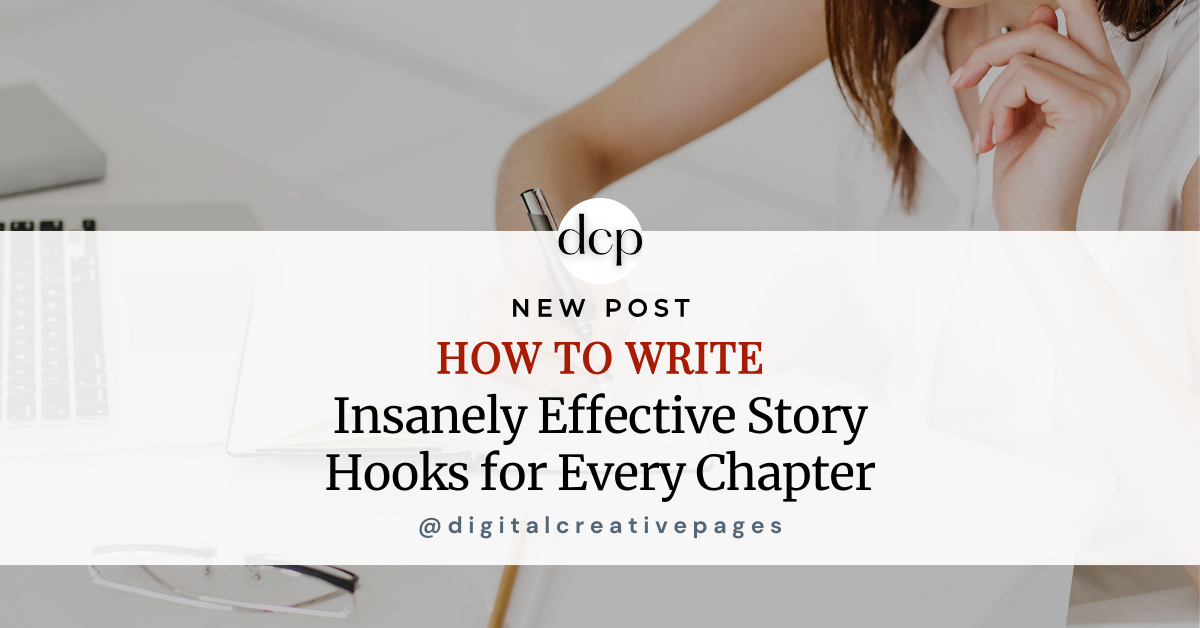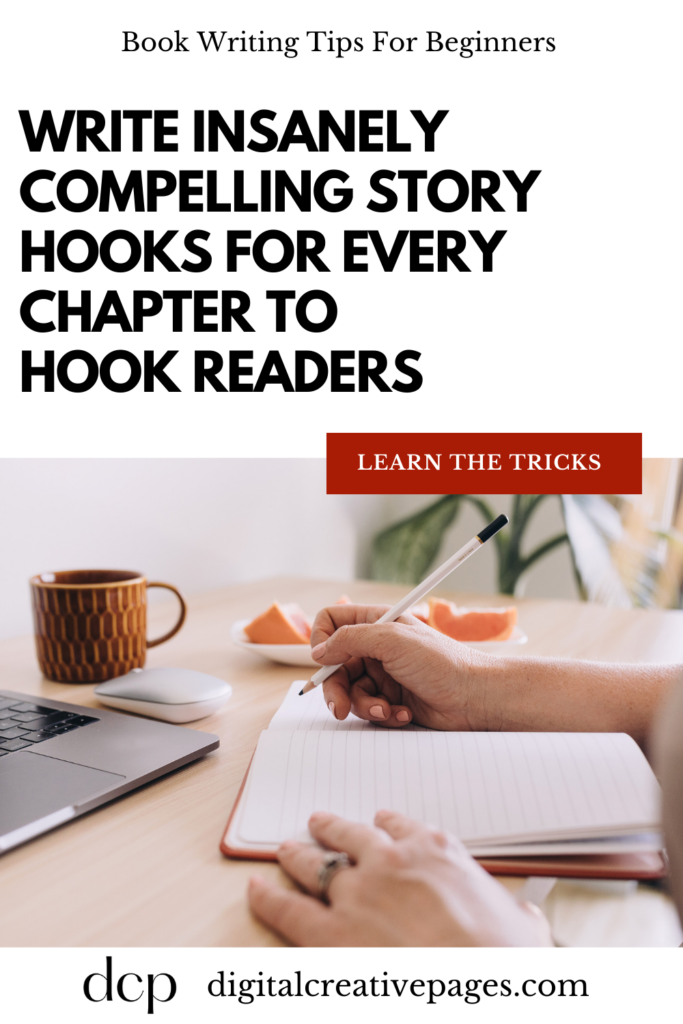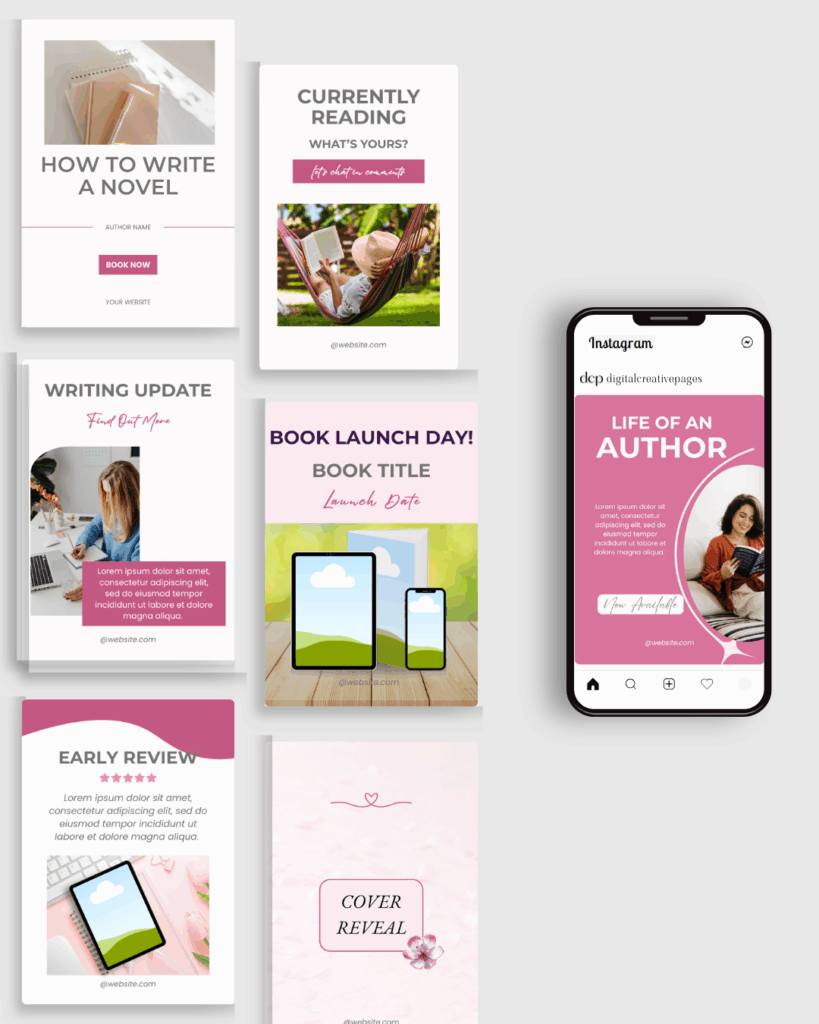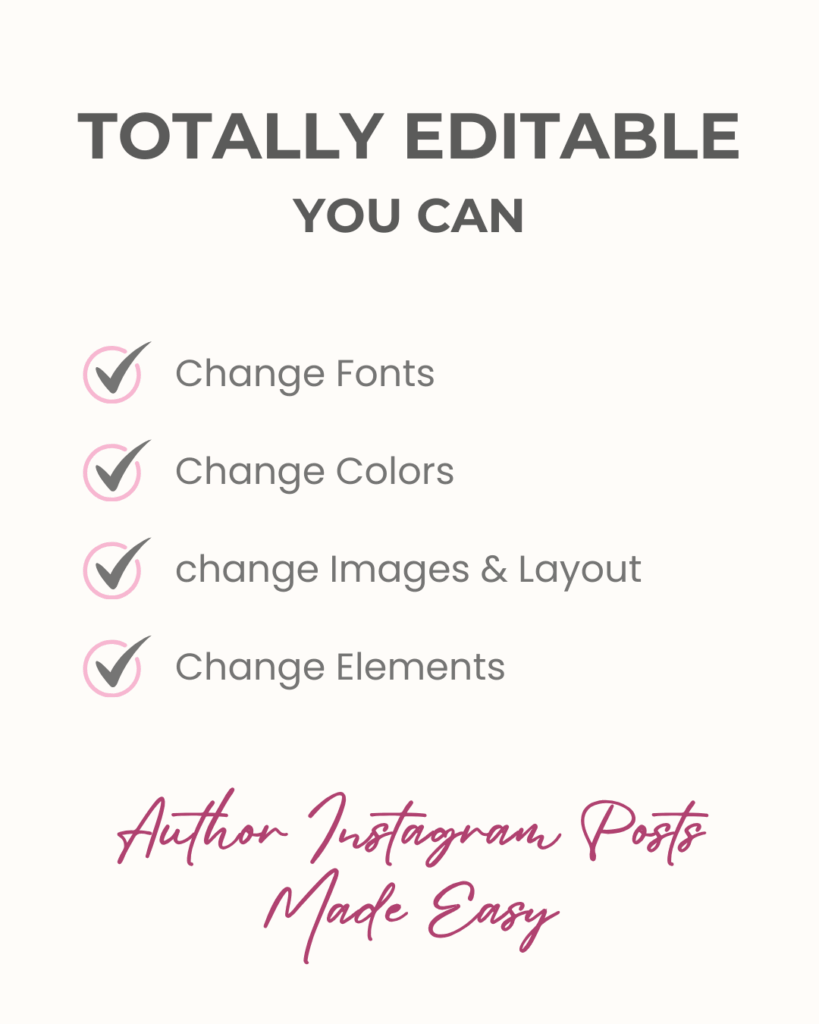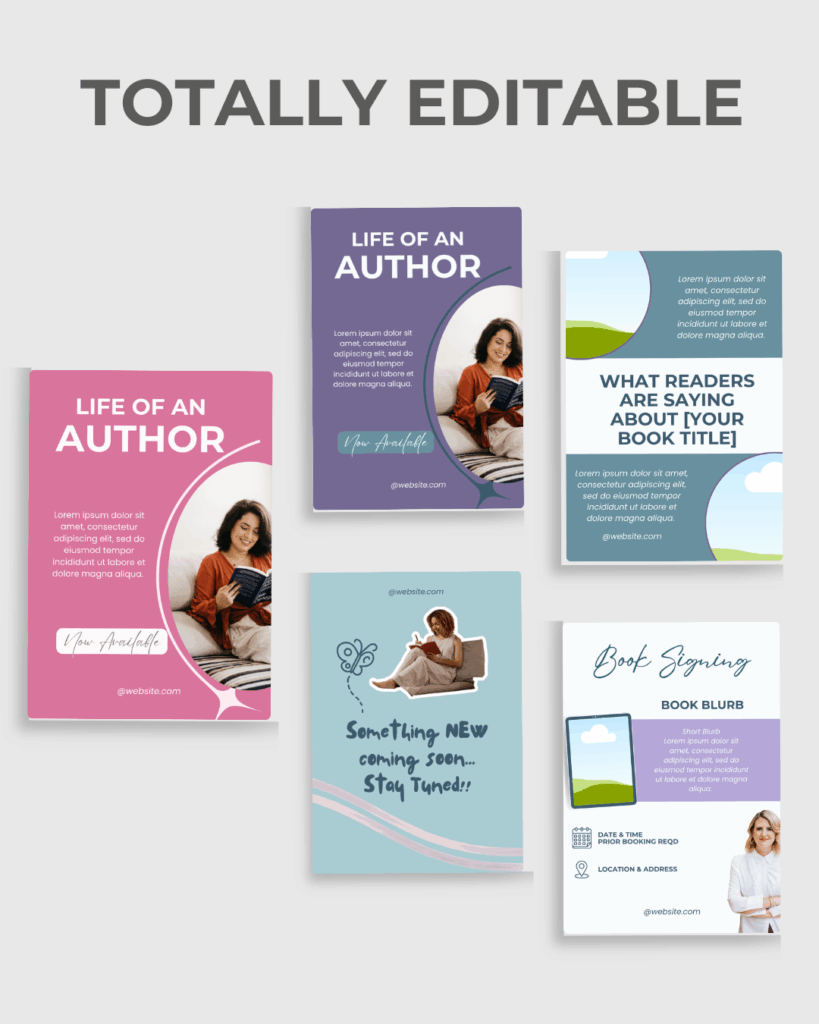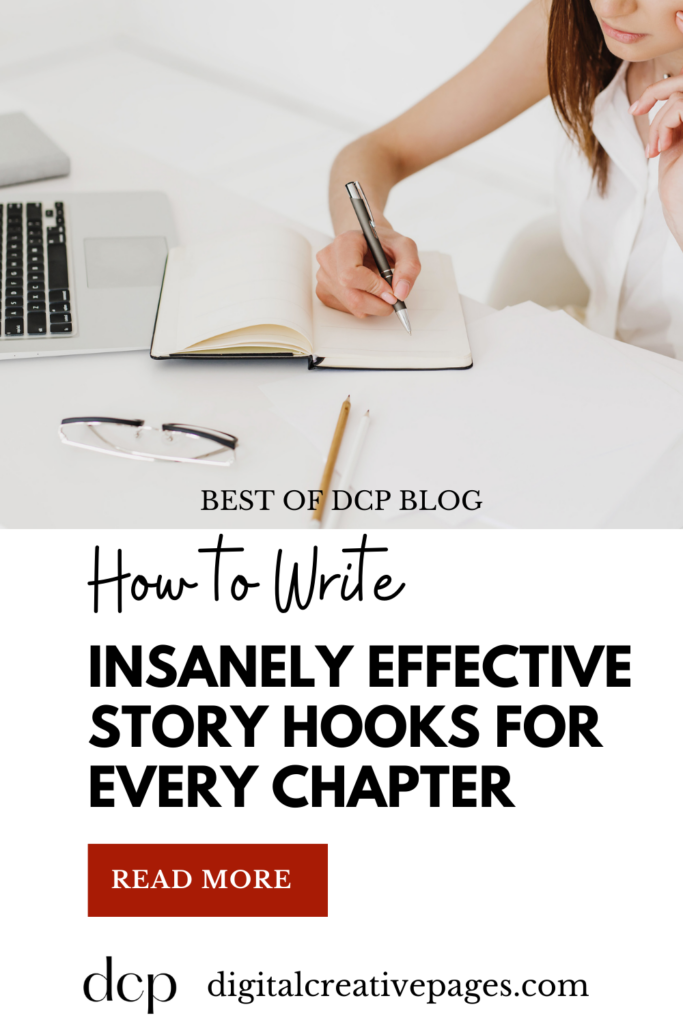Introduction
When it comes to crafting a novel, one of the most important skills you can develop as an author is how to write insanely effective story hooks. A good hook grabs your reader’s attention and keeps them invested in your story. It’s what makes them think, Just one more chapter, even when they’re supposed to be going to bed. Mastering this skill is essential for authors who want to keep readers turning pages.
A compelling hook is the secret sauce that turns a good book into an unforgettable one. Whether you’re an aspiring novelist or a seasoned author, mastering the art of creating effective story hooks for every chapter is a skill worth honing.
In this guide, I’ll walk you through what story hooks are, why they matter, and how to create them for maximum impact. Along the way, you’ll get actionable techniques for different types of hooks, detailed explanations for each, and tips to apply them to your writing.
Save this for later
What is a Story Hook?
A story hook is a compelling element of writing that grabs the reader’s attention at the beginning or end of a chapter. It’s designed to pique curiosity and make the reader eager to continue. A hook can be anything—a mysterious event, a persuasive piece of dialogue, or a surprising twist. Essentially, it’s what makes the reader ask, What happens next?
Think of your hook as the promise you’re making to the reader. It sets up expectations and keeps them engaged in your story. The best hooks not only grab attention but also set the tone for what’s to come. Whether you’re writing the opening line of a novel or the last sentence of a chapter, the hook should leave a lasting impression.
A good hook works because it:
- Engages curiosity.
- Creates emotional investment.
- Leaves the reader wanting more.
Example: Imagine ending a chapter with the line: “And that was the moment I realized, I wasn’t alone in the house.”
Related Post: Unforgettable First Chapter That Will Hook Readers
Want easy, practical content tips to grow your business? Join my weekly email list for Canva tricks, new social media updates, and simple strategies that actually work.
Why Every Chapter Needs a Hook
Some authors focus on creating a strong hook at the beginning of their book but neglect the rest of the chapters. This is a mistake. Every chapter needs a hook to keep readers engaged. Without them, your story can feel uneven or lose momentum.
Hooks are what make your story unputdownable. They ensure that readers stay curious and connected to your narrative. A strong hook at the end of a chapter creates a sense of anticipation, while a good opening hook for the next chapter draws readers back into the action. By using hooks strategically, you can create a seamless reading experience that keeps your audience enthralled.
So, even you might be tempted to save your best hooks for the beginning and end of your book, curb the temptation and remember that every chapter deserves attention.
Here’s why:
- Momentum: Hooks ensure your story flows smoothly. Without them, readers may lose interest and put your book down.
- Engagement: Each chapter is an opportunity to re-engage the reader.
- Consistency: Strong hooks create a sense of rhythm and keep your readers emotionally invested.
- Cliffhangers: Strategic hooks at the end of chapters make it impossible for readers to stop reading.
Think of every chapter as a standalone opportunity to wow your audience while building toward your larger narrative goals.
Types of Story Hooks
Not every hook is created equal. And you need to gauge which hook will work best for your book to pull the readers into the story.
Let’s dive into the different types of hooks you can use:
1. Emotional Hooks
Emotional hooks pull at your readers’ heartstrings and make them feel deeply connected to your characters. These hooks are especially effective because they tap into universal human emotions like love, fear, loss, or hope. Readers will keep reading to see how the character navigates the emotional moment.
For example, you could open a chapter with a character discovering a heartbreaking secret or close one with them making a life-changing decision. The key to an emotional hook is to make it relatable and authentic. Readers don’t just want to observe emotions—they want to feel them alongside your characters.
Appeal directly to your reader’s feelings. Start with a moment of vulnerability, joy, or heartbreak that resonates. Like this example: “Her hands trembled as she read the letter one last time, the ink smudged by tears.”
Key Points for Emotional Hooks:
- Introduce a relatable dilemma or conflict.
- Use sensory details to evoke feelings.
- Make the stakes personal.
- End with unresolved emotions.
Pro Tip: Readers love characters they can connect with. Dig deep into your character’s inner world to craft an emotional pull.
2. Action-Based Hooks
Action hooks throw your readers directly into the middle of the action. These are great for keeping the pace fast and the tension high. Think of scenes where a character is in immediate danger, a high-stakes confrontation is unfolding, or something unexpected happens.
For example, starting a chapter with a chase scene or ending one with a sudden explosion creates urgency. These hooks are particularly effective in thrillers and adventure stories but can work in any genre when used sparingly. Action hooks work best when paired with vivid, sensory descriptions that make the moment come alive for the reader.
Make your characters dive straight into the action. This type of hook works wonders for thrillers, mysteries, or fast-paced genres. Another example: “The gunshot echoed through the alley, sending a flock of birds screaming into the air.”
Key Points for Action-Based Hooks:
- Start in the middle of a tense moment.
- Use strong, vivid verbs.
- Keep sentences short and punchy.
- Build urgency with escalating stakes.
Pro Tip: Balance action with context. While action hooks are exciting, readers need enough background to care about the scene.
3. Mystery or Question Hooks
Mystery hooks introduce questions that demand answers. These hooks work because humans are naturally curious—we want to solve puzzles and uncover the truth. You can achieve this by presenting an unexplained event, a shocking revelation, or a hint at a larger secret.
For example, you could end a chapter with a cryptic piece of dialogue or a character stumbling upon a clue. Introduce an enigma that begs to be solved. keep readers intrigued, don’t answer the question right away. Instead, weave the mystery throughout the story, giving readers just enough information to keep them guessing.
Questions naturally pull readers forward because we’re wired to seek answers. Take for example this line: “Why was there a photograph of her in his wallet—a photo she had never taken?”
Key Points for Mystery Hooks:
- Introduce an unexpected twist or piece of information.
- Raise questions that aren’t immediately answered.
- Layer the mystery throughout the chapter.
- Use subtle foreshadowing to create intrigue.
Pro Tip: Don’t overuse mystery hooks; too many unanswered questions can frustrate readers instead of captivating them.
4. Dialogue Hooks
Dialogue hooks use sharp, impactful lines of conversation to draw readers in. A single sentence of dialogue can set the stage for an entire chapter or leave readers desperate to know what happens next. The key is to make the dialogue concise and loaded with meaning or emotion.
For example, you could start a chapter with a line like, “I never meant to kill him, but I didn’t have a choice.” This kind of dialogue creates an immediate sense of conflict and raises questions about the speaker’s motives. Similarly, ending a chapter with a cliffhanger statement keeps readers hooked.
A line of such a dialogue sparks curiosity or tension. Don’t you feel it in this line? “If you leave now, don’t bother coming back.”
Key Points for Dialogue Hooks:
- Use emotionally charged or surprising statements.
- Keep it concise and impactful.
- Reveal conflict or stakes through the dialogue.
- Avoid generic or overly expositional lines.
Pro Tip: Dialogue hooks work best when paired with a strong narrative voice that amplifies the emotion or tension.
5. Setting Hooks
A vividly described setting can serve as an effective hook by immersing readers in a new and fascinating world. Setting hooks work well when the environment itself is integral to the story, such as a stormy night foreshadowing danger or an eerie landscape creating a sense of unease.
For example, opening a chapter with “The fog was so thick, I couldn’t see my hand in front of my face,” immediately sets a mysterious and tense tone. By using specific sensory details, you can draw readers into the scene and make them feel like they’re right there with the characters.
Transport readers to an unforgettable place or moment with evocative descriptions. Like this line that paints a vivid picture: “The sky burned orange as ash fell like snow over the abandoned city.”
Key Points for Setting Hooks:
- Focus on one or two striking details.
- Use sensory language to immerse the reader.
- Create contrasts to evoke surprise or unease.
- Connect the setting to the character’s emotions.
Pro Tip: Use setting hooks sparingly. When done well, they can create unforgettable imagery that anchors the story in the reader’s mind.
Struggling to keep your author platform active while juggling writing deadlines?
My Author Book Engagement Template Pack includes 112 ready-to-use Canva designs for Instagram and Pinterest. Perfect for cover reveals, book launches, reader engagement, and everything in between. No more staring at blank Canva pages wondering what to post! These templates work for any genre and require no Canva Pro account. Simply download, customize with your book details and brand colors, and post.
For less than the cost of 2 lattes, get your template pack here, and never run out of engaging content ideas again
How to Write Chapter Hooks Step-by-Step
1. Understand Your Chapter’s Purpose
Before you write your hook, clarify what the chapter is about. Ask yourself:
- What does this chapter accomplish in the story?
- How does it advance the plot or character development?
- What emotion do I want to evoke in the reader?
- What do I want the reader to feel at this moment?
- How does this hook serve the story?
- What’s the most compelling way to convey this?
2. Experiment with Different Hook Types
Don’t settle for the first hook idea that comes to mind. Play around with different types of hooks—emotional, action, mystery, dialogue, or setting—and see which one feels the most impactful. The best hooks often combine elements from multiple types. Experiment with several approaches to find the strongest one.
3. Focus on Clarity and Impact
A hook needs to be sharp and to the point. Avoid overloading it with unnecessary details or backstory. Instead, focus on the most compelling aspect of the moment. Edit your hook until it’s punchy and precise. Every word should serve a purpose.
4. Tie It Back to the Chapter’s Theme
The best hooks feel organic and connected to the story rather than tacked on.
5. Test Your Hooks and Revise
Once you’ve written your hook, take a step back and read it from a reader’s perspective. Does it grab your attention? Does it make you want to keep reading? Don’t be afraid to tweak it until it feels just right.
Ask beta readers for feedback on your hooks. Are they engaging enough?
Pro Tip: The most effective hooks combine elements of surprise, emotion, and suspense.
Common Mistakes to Avoid
1. Being Too Vague
A hook should intrigue, not confuse.
- Example of a weak hook: “It was a day she would never forget.”
- Revise to: “It was the day she lost everything—and found something she never expected.”
2. Overloading with Detail
Hooks should be concise. Avoid long-winded explanations.
3. Neglecting Consistency
Don’t let one great hook carry the entire story. Ensure every chapter maintains engagement.
4. Using Clichés
Steer clear of overused phrases or scenarios. Originality wins every time.
You may also like: Writer’s Block: Strategies That Will Overcome It
How to Begin the Chapters with Strong Hooks
To write a chapter hook that resonates, you need to understand the purpose of the chapter and how it fits into the larger story.
- Identify the Key Moment: What’s the most compelling part of this chapter? Start there.
- Make It Personal: Draw readers into the character’s thoughts, feelings, or immediate actions.
- Set the Tone: The opening hook should match the mood or pacing of the chapter.
How to End a Chapter with a Hook
Ending a chapter with a strong hook is just as important as beginning one with impact. The goal is to leave readers wanting more. It is essential for the book to become a page-turner.
Here are some techniques to try:
- Unresolved Conflict: Close the chapter at a climactic moment, leaving a problem or question unanswered. Keep the readers hanging on to your every word
- Foreshadowing: Hint at what’s to come without revealing too much.Build anticipation for future events
- Emotional Cliffhanger: End on a raw, emotional note that leaves readers deeply invested.
- Revelations: Drop a bombshell that changes everything.
For example, ending a chapter with “And then, the door creaked open,” creates suspense and ensures readers will turn the page.
Pro Tip: End chapters with a line that sticks in the reader’s mind—something they’ll mull over even after putting the book down.
Final Thoughts
Writing effective story hooks for every chapter takes practice, but it’s a skill that can elevate your storytelling. By using emotional, action, mystery, dialogue, and setting hooks strategically, you can keep readers engaged from beginning to end. Remember to stay consistent, align your hooks with your story’s tone, and always leave your readers wanting more.
Hooks are the lifeline of your story, pulling readers through each chapter and leaving them hungry for more. By experimenting with different types of hooks and honing your craft, you can create a story that’s impossible to put down.
Remember, every chapter is an opportunity to re-engage your audience. Keep your hooks fresh, your stakes high, and your writing purposeful. Happy writing!
MY TOP POSTS
My introducer post – check out why I chose Showit as my website builder here
Use my code DCP to get one 1.5 months free on Showit
Get all the resources for your social media and digital marketing without breaking the bank from my DCP Shop here
Pin this for later
